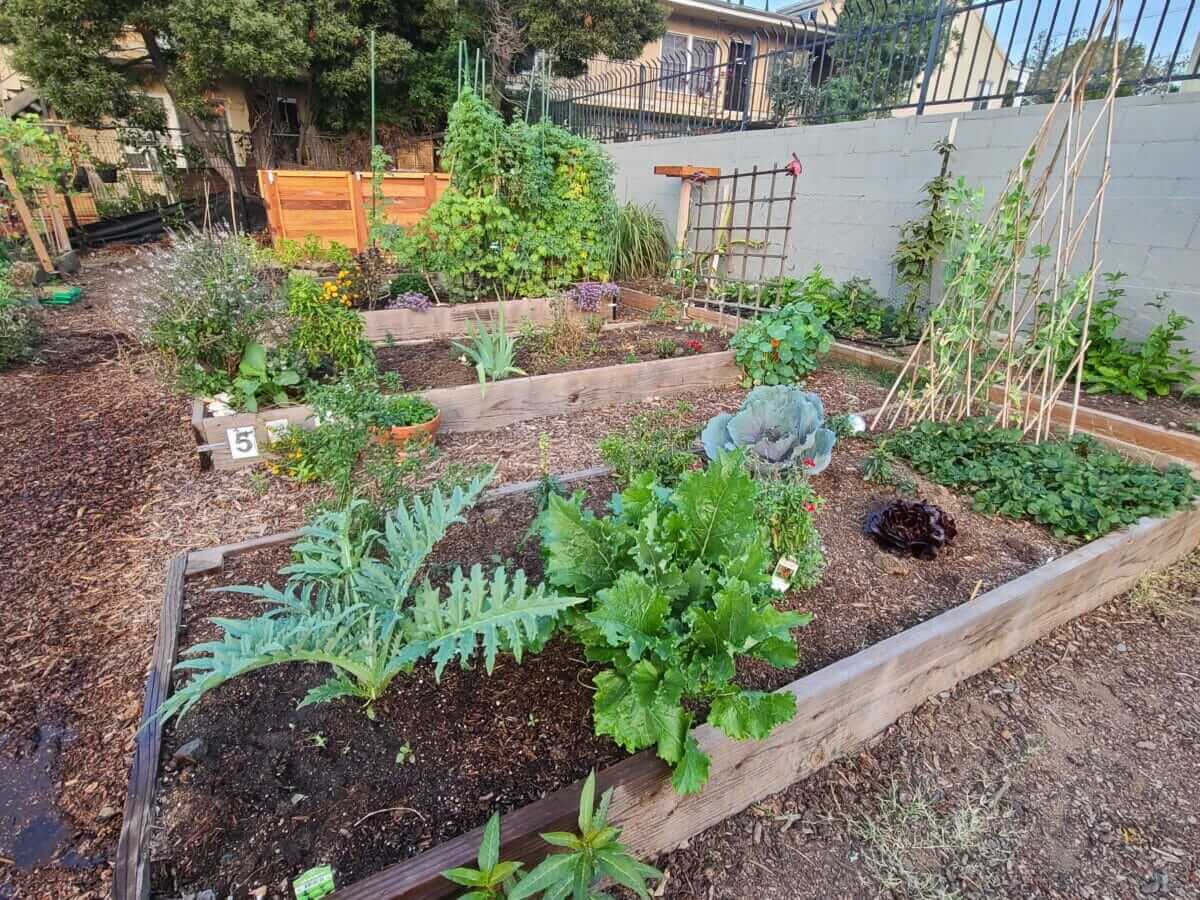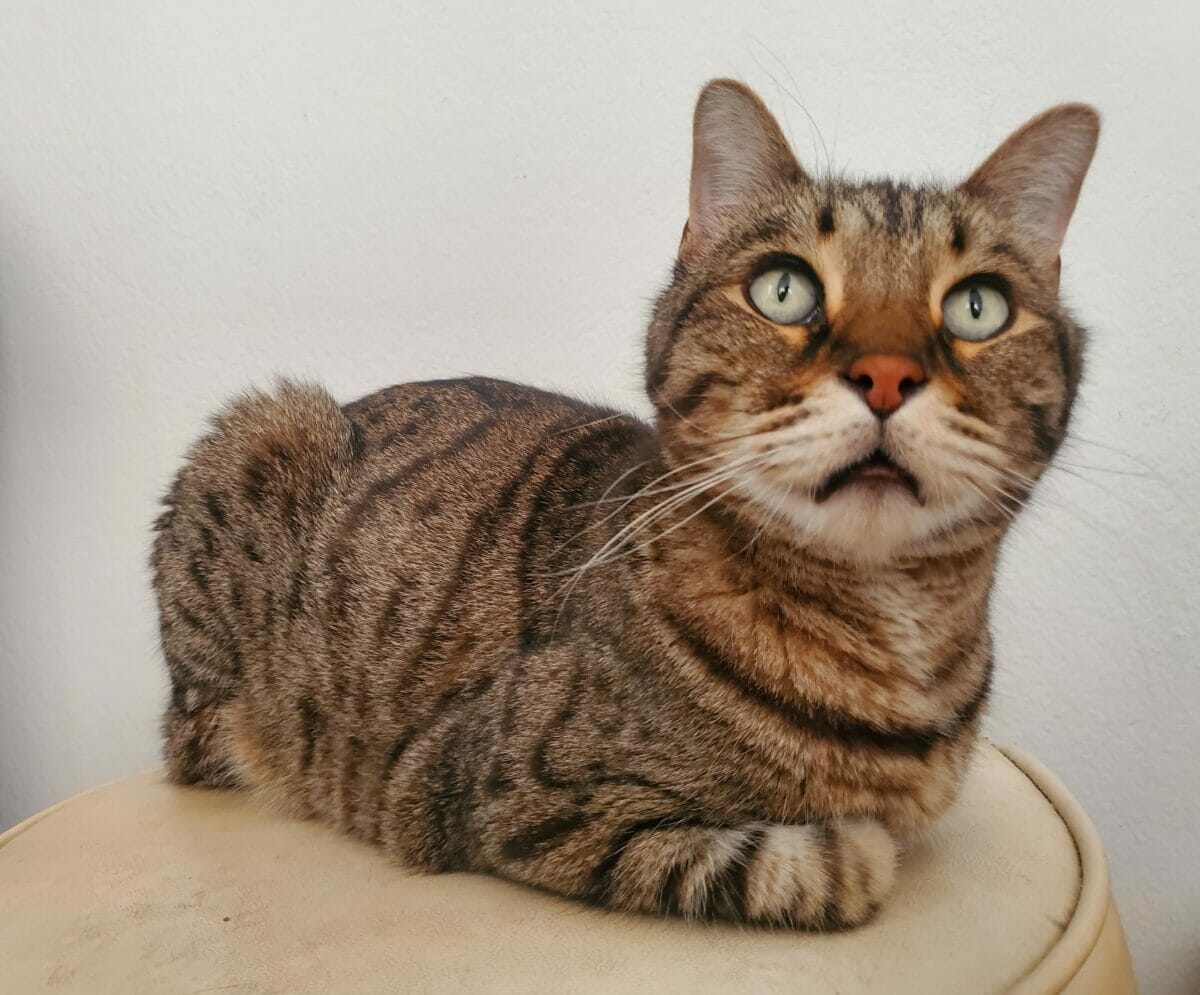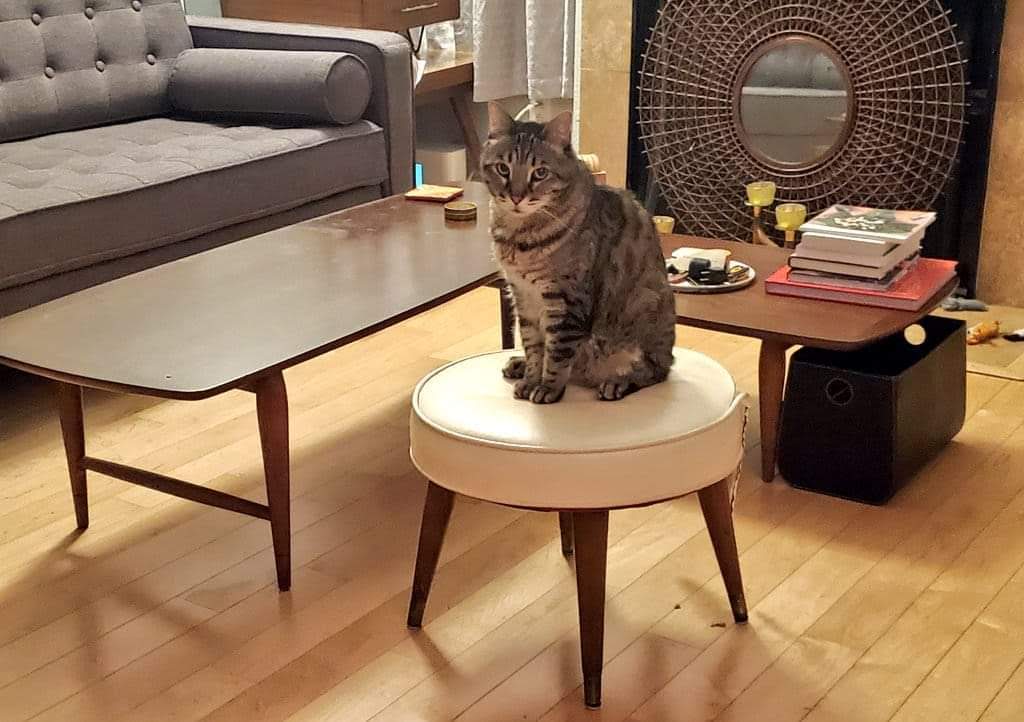Learning to Grieve and Grow In My Community Garden
In the early days of the pandemic, I tended to my new plot and houseplants as a way to mourn the loss of my beloved cat.
Learning to Grieve and Grow In My Community Garden
In the early days of the pandemic, I tended to my new plot and houseplants as a way to mourn the loss of my beloved cat.

The author's community garden plot in Los Angeles.by Esther Tseng.
When the pandemic lockdown hit in March 2020, the sessions with my therapist moved to Zoom. During a virtual meeting with her over my laptop, Rufus, my 12-year-old Bengal cat, jumped into my lap, reaching for my chin with his paw and my attention with a loud, extended howl.
Leading up to this was a whole slew of in-person sessions where I laid bare the evidence of his uniqueness. Rufus was a vocal, striped beast who prolifically vocalized a vast vocabulary of yowls, chirps and croons to express his wants, needs and our bond. He was my first cat, and we were so connected, he’d respond to my glance with a meow that emitted no sound.
I had already decided that anyone in tune with animals could surely see how exceptional he was.
My therapist was not impressed. “OK, wow,” she breathed deeply. Then, she sat up. “You and your cat are codependent.”
There was a pause.
I wanted to protest, but I swallowed my bias and any illusion that it was especially tragic that my cat had just been diagnosed with mouth cancer—the most common and rapid kind found in cats.

When Rufus and I said good-bye, it was within the comforts of home as he laid on my chest. If we were codependent before, we were completely enmeshed by the end of his life. Palliative care of Rufus had essentially transformed the start of the pandemic into a bittersweet opportunity to spend as much time as I could with him. After he died, I had no idea what to do with my work-from-home time now that I wasn’t feeding him four times a day, taking him to the vet for his pain shot or cradling him in my arms.
So I focused on what I had been missing while he was here: plants. Gardening. Living things that grew in soil. In fact, Rufus’s chewing habit—driven by his jealousy of anything else that commanded my attention and ability—had banished even cut flowers from my living space for more than a decade.
Around the corner from my Los Angeles condo lay a community garden. Just a few months before the pandemic hit, I had signed up for a plot in the garden. After a childhood spent observing my mom’s seasonal gardening habit around our Midwestern house laid the foundation, I finally had a budding curiosity in horticulture. But laziness and complacency made me slow to fortify my plot’s nutrient-deficient, lifeless dirt. When I had told my mom that I was going to start gardening, she was skeptical. “Wow,” her reply text said. “I’m surprised you’d be interested in gardening!”
She wasn’t wrong. I had taken over the brand new plot the prior fall, starting by scouring the plot for rocks and weeds. Still, it took a couple warnings from the community garden chair that I needed to be turning over the soil and planting seeds or starts for me to get going. I did the absolute minimum, letting it languish as I struggled to grow my green thumb. A barista friend from my neighborhood coffee shop planted herbs such as oregano, thyme and cilantro along with some vegetables I ended up neglecting, failing to remember what they were. The herbs, curiously enough, continued to grow and sprawl in the plot.

After Rufus died, I reached for other living things I could successfully steward to fill that gaping hole. I drummed up a burgeoning motivation to learn how to care for things I didn’t already know how to tend to, humbling myself to the learning cycle of gardening trials and errors. I started visiting the community garden regularly, amending what started as lifeless dust with more compost and soil, planting kale and strawberry starts, blessed to be in USDA Hardiness Zone 10b. More experienced gardeners observed I wasn’t watering deep enough, and I also learned about watering more carefully and intentionally, close to the ground, so as not to kick fungus up from the soil and spread blight or leave plants moist at night, encouraging aphids to feast on them.
Soon, I felt the urge to fill the void in my own living space with greenery. I looked into houseplants, first ordering easy starter plants such as a ZZ and philodendron online, then a purple shamrock and bird’s nest fern from local sellers. I read up on proper drainage and the right pots to use, what the different levels of light really meant in my living space, how to water over the sink and keep planters’ pots elevated within their decorative ceramic pots. I bought a humidifier for each room, a soil moisture meter and bottles of fertilizer. Without Rufus to care for anymore, I poured that love and energy into my plants. Now, the fiddle leaf fig I was given less than a year ago by a good friend has tripled in size. I became a bona fide, pandemic plant enthusiast statistic.
Back at my plot, I’ve grown dozens of sweet, sugar snap peas on trellised vines and bulbous, blood-red beets rooted into the ground. I’ve pruned tomato vines to yield sun-burnt early girls and hearty dark, red-green kumatos. Last summer, I made a couple of batches of salsa verde thanks to my tomatillo and serrano pepper harvests. I’ve also cut a lone yellow watermelon too soon off the vine, my inexperience and impatience no match for the fruit. And there is the crab grass that’s perpetually creeping into my bed, getting the best of me. My gardening and houseplant journey continues.
A couple of months ago, more than a year after losing Rufus, I adopted another cat. Luckily, eight-month-old Chester does not chew my beloved new plants. Since my potted treasures have seniority over him, he’s quickly learned his place—with the aid of a few spritzes of a pet-repellent spray. (OK, maybe not completely, as I’ve had to transfer my purple shamrock rhizomes to my mom, but still.) That Chester can be entertained by things other than chewing greenery is a welcome trait in our adoptee, and I am so thankful for this new frontier in cohabitation.
On the two-minute walk home from the garden to my condo, sometimes I see a few of the stray cats that Rufus used to yowl at across the street from my balcony. One of them is striped just like Rufus was, and I look for him each time, as if to let him know that we, my plants and my cat, are all getting along now.
Follow us

This work is licensed under a Creative Commons Attribution-NoDerivatives 4.0 International License.
Want to republish a Modern Farmer story?
We are happy for Modern Farmer stories to be shared, and encourage you to republish our articles for your audience. When doing so, we ask that you follow these guidelines:
Please credit us and our writers
For the author byline, please use “Author Name, Modern Farmer.” At the top of our stories, if on the web, please include this text and link: “This story was originally published by Modern Farmer.”
Please make sure to include a link back to either our home page or the article URL.
At the bottom of the story, please include the following text:
“Modern Farmer is a nonprofit initiative dedicated to raising awareness and catalyzing action at the intersection of food, agriculture, and society. Read more at <link>Modern Farmer</link>.”
Use our widget
We’d like to be able to track our stories, so we ask that if you republish our content, you do so using our widget (located on the left hand side of the article). The HTML code has a built-in tracker that tells us the data and domain where the story was published, as well as view counts.
Check the image requirements
It’s your responsibility to confirm you're licensed to republish images in our articles. Some images, such as those from commercial providers, don't allow their images to be republished without permission or payment. Copyright terms are generally listed in the image caption and attribution. You are welcome to omit our images or substitute with your own. Charts and interactive graphics follow the same rules.
Don’t change too much. Or, ask us first.
Articles must be republished in their entirety. It’s okay to change references to time (“today” to “yesterday”) or location (“Iowa City, IA” to “here”). But please keep everything else the same.
If you feel strongly that a more material edit needs to be made, get in touch with us at [email protected]. We’re happy to discuss it with the original author, but we must have prior approval for changes before publication.
Special cases
Extracts. You may run the first few lines or paragraphs of the article and then say: “Read the full article at Modern Farmer” with a link back to the original article.
Quotes. You may quote authors provided you include a link back to the article URL.
Translations. These require writer approval. To inquire about translation of a Modern Farmer article, contact us at [email protected]
Signed consent / copyright release forms. These are not required, provided you are following these guidelines.
Print. Articles can be republished in print under these same rules, with the exception that you do not need to include the links.
Tag us
When sharing the story on social media, please tag us using the following: - Twitter (@ModFarm) - Facebook (@ModernFarmerMedia) - Instagram (@modfarm)
Use our content respectfully
Modern Farmer is a nonprofit and as such we share our content for free and in good faith in order to reach new audiences. Respectfully,
No selling ads against our stories. It’s okay to put our stories on pages with ads.
Don’t republish our material wholesale, or automatically; you need to select stories to be republished individually.
You have no rights to sell, license, syndicate, or otherwise represent yourself as the authorized owner of our material to any third parties. This means that you cannot actively publish or submit our work for syndication to third party platforms or apps like Apple News or Google News. We understand that publishers cannot fully control when certain third parties automatically summarize or crawl content from publishers’ own sites.
Keep in touch
We want to hear from you if you love Modern Farmer content, have a collaboration idea, or anything else to share. As a nonprofit outlet, we work in service of our community and are always open to comments, feedback, and ideas. Contact us at [email protected].by Esther Tseng, Modern Farmer
November 28, 2021
Modern Farmer Weekly
Solutions Hub
Innovations, ideas and inspiration. Actionable solutions for a resilient food system.
ExploreExplore other topics
Share With Us
We want to hear from Modern Farmer readers who have thoughtful commentary, actionable solutions, or helpful ideas to share.
SubmitNecessary cookies are absolutely essential for the website to function properly. This category only includes cookies that ensures basic functionalities and security features of the website. These cookies do not store any personal information.
Any cookies that may not be particularly necessary for the website to function and are used specifically to collect user personal data via analytics, ads, other embedded contents are termed as non-necessary cookies.
A pet, like Rufus, is a gift. It is really hard when we have to return the gift